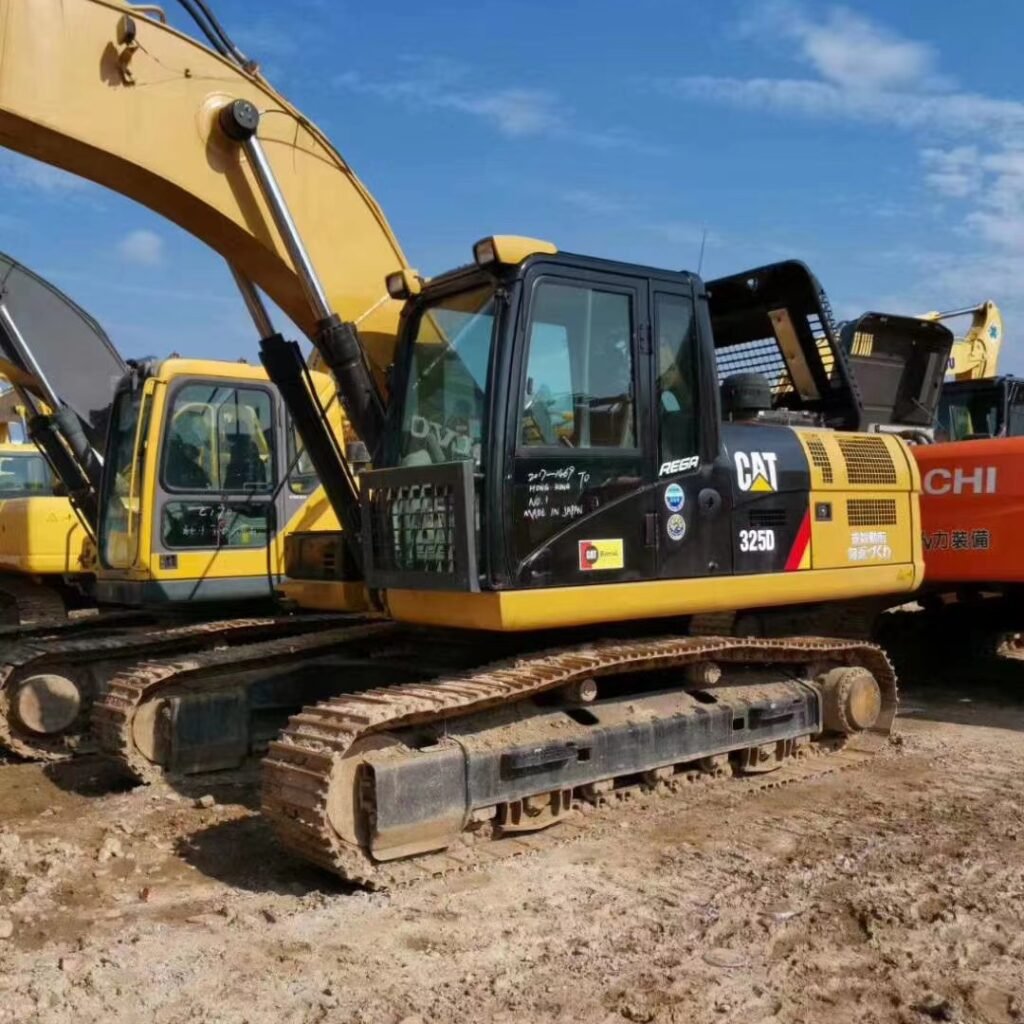I. Introduction
- Background: Excavators are heavy machinery widely used in construction, civil engineering, road building, and mining. Due to their efficient digging capabilities and versatility, excavators play an indispensable role in engineering projects. Selecting the right excavator can significantly enhance work efficiency, reduce project costs, and shorten timelines.
- Purpose and Significance: This guide aims to help users gain an in-depth understanding of different types of excavators, their characteristics, and application scenarios. By precisely matching engineering needs, users can make informed choices that ensure smooth project execution and successful completion.
II. Overview of Excavator Types
1. Classification by Work Method
- Crawler Excavators: Suitable for complex terrains and heavy-duty tasks, they offer excellent stability and traction, making them effective for large-scale earthworks in muddy or rugged conditions.
- Wheeled Excavators: Ideal for urban construction and flatter surfaces, these excavators provide higher mobility and speed, allowing for quick movement and operation in confined job sites.
2. Classification by Use
- Standard Excavators: General-purpose machines that can handle most digging tasks and are compatible with various attachments, such as buckets and breakers, to adapt to different working conditions.
- Mini Excavators: Designed for tight spaces and light-duty tasks, they are highly maneuverable and easy to transport, commonly used in small-scale urban projects such as landscaping and municipal work.
- Hydraulic Excavators: Designed for specific needs like deep digging, demolition, or mining operations, these machines typically have more powerful digging capabilities and specialized functions, suitable for complex work environments.
3. Classification by Size
- Small Excavators: Suitable for small-scale or urban environments, they are highly maneuverable and easy to operate in narrow spaces, making them convenient for transport.
- Medium Excavators: Ideal for most mid-sized projects, they balance power and flexibility, capable of meeting a variety of job requirements.
- Large Excavators: Designed for heavy earthmoving and mining tasks, they offer significant digging power and stability, capable of handling extreme working conditions.

III. Key Factors in Choosing an Excavator
1. Analysis of Engineering Needs
- Project Scale: Assess the size and complexity of the project to select the appropriate excavator model, ensuring the equipment meets project demands.
- Soil Type: Consider the hardness and composition of the soil to choose suitable excavators and attachments, such as bucket types, to enhance work efficiency.
- Working Environment: Evaluate the construction environment, including terrain, space constraints, and weather conditions, ensuring the chosen excavator can operate effectively in the expected environment.
2. Equipment Performance Requirements
- Power and Efficiency: Understand the excavator’s power output, work efficiency, and fuel consumption to ensure a good balance between economy and performance.
- Operating Range: Consider the maximum digging depth and bucket capacity of the excavator to ensure it meets specific project requirements, avoiding delays due to insufficient equipment capability.
- Ease of Operation: Assess the user-friendliness of the operating system and the operator’s comfort level to improve work efficiency and reduce operator fatigue.
3. Economic Factors
- Purchase Cost: Evaluate the budget and select excavators that offer high cost-performance ratios, considering the relationship between initial investment and long-term benefits.
- Maintenance and Operating Costs: Analyze the long-term maintenance and operating costs to lower the total cost of ownership, ensuring the equipment’s economic viability during use.
- Renting vs. Buying: Assess the pros and cons of renting versus buying based on project needs, choosing the most suitable option—especially in short-term projects where renting might be more cost-effective.

IV. Recommended Brands and Models of Excavators
1. Overview of Leading Brands
- Brand A: Known for its reliability and high performance, suitable for various engineering needs, and offers comprehensive after-sales service and technical support.
- Brand B: Provides a diverse range of models that cater to specific work scenarios, with a solid market reputation and favorable user feedback.
- Brand C: Recognized for its affordability, making it a popular choice for budget-conscious projects, offering high value for money.
2. Specific Model Recommendations
- Model X: Suitable for mid-sized projects, it features excellent digging capabilities and fuel efficiency, widely used in civil engineering with positive user reviews.
- Model Y: Designed as a mini excavator, it excels in tight space operations, making it ideal for landscaping and municipal work, known for easy operation and transport.
- Model Z: A heavy-duty excavator suitable for large earthmoving and mining tasks, it offers robust power and adaptability to harsh environments, meeting high-intensity work demands.
V. On-Site Inspection and Testing
1. On-Site Inspection
- Equipment Condition Check: Prior to purchase, it is advisable to conduct an on-site inspection of the equipment, examining its exterior, wear levels, and maintenance history to ensure suitability and reliability.
- Supplier Reputation: Choose reputable suppliers and assess their after-sales service and support capabilities to ensure timely assistance during equipment operation.
2. Testing Experience
- Operational Testing: Conduct a trial run to evaluate the excavator’s performance, maneuverability, and comfort level, ensuring that the equipment meets practical needs and enhances the operator’s work experience.
VI. Summary and Recommendations
- Comprehensive Assessment: Summarize the key factors in selecting the best excavator, emphasizing the importance of precise matching based on engineering needs to ensure successful project implementation.
- Practical Suggestions: Advise users to thoroughly consider engineering requirements, equipment performance, and economic factors when selecting an excavator. Additionally, encourage users to consult professionals or utilize industry resources for more comprehensive information and guidance, ensuring they choose the most suitable equipment for their projects.



